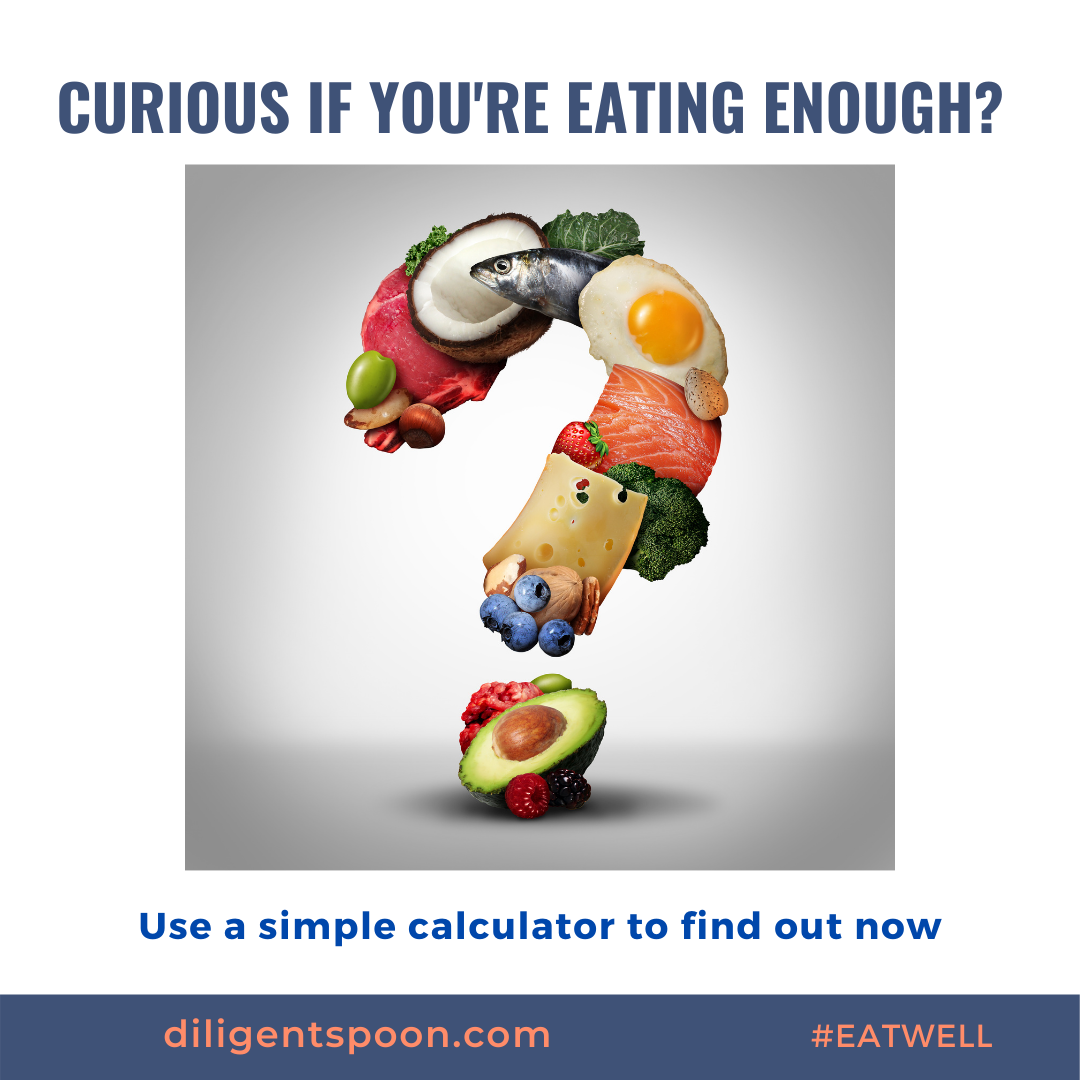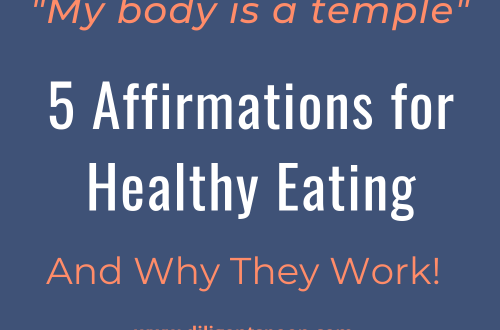
Curious if you’re eating enough? Use a simple calculator and find out now
A few years ago, I wondered to myself, “Am I eating enough?” I was really cranky, getting injured during regular exercise, and feeling all-around burned-out.
Have you ever felt cranky, burned-out, and like you’re having more aches and pains than normal?
Signs You Aren’t Eating Enough
If you said “yes!”, you might be surprised to know how many calories you actually need to fuel everything your body does – from firing neurons in your brain to going for a jog.
Here are some quick signs and symptoms that you may not be eating enough:
- You’re dragging a** all day.
- Everyone and everything is annoying to you.
- Even when it’s not cold, you’re cold.
- You’re hungry all the time (this seems like a no-brainer, huh?).
- You’re constipated.
- Sometimes, you completely lose control around food.
- You can’t get pregnant (when you’re trying).
If you’re saying “that’s me” to a lot of these, you might be undereating.
“But I don’t work out every day. How many calories could I possibly need?” I’m glad you asked. You need way more calories – just to run your body – than a lot of weight loss plans would have you believe.
So, what goes into – or comes out of, as it were – your total daily energy expenditure (or TDEE)?
- Resting Metabolic Rate (RMR): This is the energy associated with the maintenance of major body functions (60 to 75% of total).
- Thermal Effect of Feeding (TEF): Calories you burn just digesting your food (10%).
- Thermal Effect of Activity (TEA): Energy you burn doing stuff – everything from fidgeting to housework to lifting weights (15 – 30%).
How to Calculate Your Energy Needs
The calculator below will tell you about how much food – in calories – you need to not just survive, but thrive. Note that:
- This calculator does not take into life events, such as pregnancy or metabolic conditions.
- These are estimates – use these numbers as guideline and not a rule.
- If you are super lean and have very low body fat, you will burn approximately 10% more calories than the estimate. For example, you’ll burn 2200 calories per day instead of the calculator’s estimate of 2000.
- I like this type of calculator better than the ones in many fitness apps, which tend to focus on weight loss and may give low estimates.
A word of caution (and to prevent hate mail about how numbers are “triggering”) … don’t use this calculator if numbers are triggering for you! If you find numbers helpful as a point of reference, this is for you! ⤵️
It’s easy to use – just fill this out:
How I Use TDEE Calculators
When I started logging my food a few years ago (I use MyFitnessPal), I realized I was not eating enough. Using calculators like the one above helps me know what my basic calorie needs are.
Still, I encourage you to take these numbers “with a grain of salt”. For example, I know that I tend to need more calories than the calculator provides because of my body composition and high activity on some days. If you’re curious about how and what I eat in a day now, check out “What a Nutritionist Really Eats in a Day.“
What does 2000 calories look like, you ask? The answer is … it depends. If you eat lots of vegetables, fruits, and other real foods that are high on nutrition – 2000 calories’ worth is a lot of food! On the other hand, some restaurant meals are 2000 calories all by themselves!
Check out this pretty awesome article from the NY Times to see some actual pictures of 2000 calories – in a single meal, a single drink, cooking-from-home, and more.
Resources
Barnes, Zahra. “7 Signs You’re Not Eating Enough Calories.” SELF, SELF, 20 Nov. 2017, www.self.com/story/signs-youre-not-eating-enough-calories.
“Undereating & Training – How Eating Too Little Affects Training.” Girls Gone Strong, 21 July 2020, www.girlsgonestrong.com/blog/articles/undereating/.



